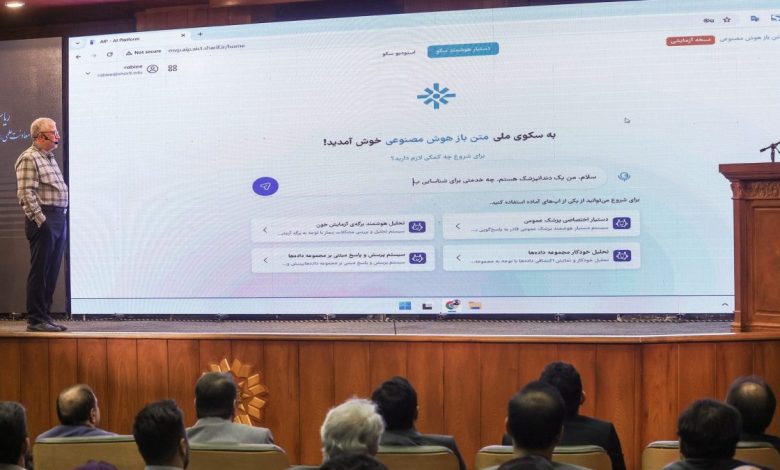Iran unveils national open-source AI platform to align with global advancements

Iran unveiled its national open-source artificial intelligence (AI) platform on Saturday at the Raizan International Conference Center with Vice President for Science, Technology, and Knowledge-Based Economy, Hossein Afshin, in attendance.
According to the Communications and Information Center of the Vice Presidency the project aims to position Iran as a competitive player in the global AI landscape while fostering domestic innovation.
The platform, developed entirely using indigenous technologies, is designed to accelerate AI development, reduce costs, and enhance scalability, reliability, and security.
Hamidreza Rabiei, the head of the Advanced Information and Communication Technology Research Institute (AICT) and the Data Science and AI Innovation Center, emphasized that the platform relies solely on local AI tools and open-source software, ensuring compliance with accessibility and non-operational defense standards.
Rabiei highlighted the global shift toward platform-based economies, noting that the rise of digital and intelligent platforms has transformed traditional economic models.
“The emergence of platforms is a natural progression in the digital economy, and Iran’s national AI platform is a critical step in this direction,” he said.
The platform offers advanced capabilities in natural language processing, computer vision, automated machine learning (AutoML), intelligent data analysis, and large-scale data visualization.
It also features a multimedia user interface and service-oriented architecture, enabling knowledge-based companies to develop AI products more efficiently.
Rabiei projected that the platform could expand Iran’s AI market from less than 2 trillion tomans annually to over 40 trillion tomans.
Developed in collaboration with 16 faculty members and more than 70 researchers, the platform includes a robust data and processing infrastructure, machine learning operations (MLOps) tools, large language models (LLMs), vision-language models (VLMs), and specialized studios for AI development.
Its unique features include cloud-compatible architecture, scalability, real-time monitoring, and optimization of AI models, as well as seamless integration of advanced technologies like speech recognition and text-to-speech conversion.
The platform’s open-source nature allows users to access advanced AI capabilities without complex configurations or high licensing costs.
It empowers businesses to make data-driven decisions, fosters collaboration and innovation within the AI community, and significantly reduces development time and costs for startups and researchers.
Rabiei also outlined Iran’s ambitions to achieve Artificial General Intelligence (AGI), enabling systems to acquire and apply knowledge like humans.
“By 2025, we aim to reach the reasoning stage of AI development, which requires substantial support and investment,” he said.






